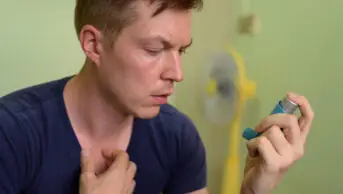
Shutterstock.com
The zero-waste movement has been steadily growing in popularity over the past few years. The aim? To produce no landfill rubbish at all.
Although this may sound ludicrous, some of these so-called ‘zero-wasters’ have been able to eliminate waste from almost every aspect of their modern life, fitting a year’s worth of rubbish into a mason jar.
But one particular area has been the downfall of the most ardent zero-waster — medicine. The advice given by the zero-wasters around the topic is very sensible. If you are unwell and have been prescribed a medicine, take it, and do not worry about the packaging. For the majority of people, medicine plays a very small part in day-to-day life, and there are other areas where waste can be reduced.
However, anyone who works in pharmacy will be used to the bags and bags of rubbish going to landfill each day.
Of course, the function of medicinal packaging goes beyond the aesthetic; it protects the medicine from heat, light and humidity, which can degrade some medicines dramatically. Protection from these environmental factors ensures the medicine remains stable and safe for use, and also allows for a longer expiry date. Another problem is that commonly the product remains licensed only while still in its original blister packs. Labels and patient information leaflets accompanying each medicine also serve a purpose in making sure that patients know how to correctly take their medicine. Counterfeit medicines are still a problem, and packaging can help make sure that only genuine products reach the patient.
Some progress has been made in the pharmaceutical industry to be more sustainable in manufacturing processes with the growth of green chemistry, which aims to use fewer toxic materials in drug manufacture.
Producers know that consumers want to see less packaging and a move towards using sustainable and biodegradable resources. But mainstream pharmaceutical packaging is as yet unchanged, with plastic, foil and cardboard wrapped around each medicine. Sticky labels with directions are then stuck on the box, which complicates the recycling process.
It’s not all bad news: Wal-Mart pharmacies have developed a compliance aid, Ecoslide RX[1]
, which uses 100% recyclable material while remaining child-resistant. This shows there has been some progress, but much more is needed for similar ideas to become commonplace.
What can be done? Aside from the traditional role of the high street chemist that community pharmacists play, they are involved much further back in the life of medicines. Pharmacists work in all aspects of pharmaceutical development from research to quality assurance to marketing. In these roles, pharmacists may be able to start changes within pharmaceutical companies by discussing new packaging methods and questioning which aspects of packaging are really necessary.
Some possible steps in the right direction in community or hospital could include:
- Purchasing product lines with less packaging;
- Facilities to correctly sort recycling in the pharmacy and educate staff on recycling;
- Reusable dosette boxes instead of single-use plastic ones;
- Amber glass bottles instead of plastic (perhaps a return to a more ‘traditional’ looking pharmacy!);
- Sending patient information leaflets to patients’ phones instead of on paper;
- ‘Scoop and weigh’ style containers with reusable decanters for common over-the-counter or herbal products;
- Reusable tote bags instead of plastic carrier bags;
- Writing to pharmaceutical companies to ask them what they are doing to help protect the environment — many voices can start a change.
There is still a long way to go in pharmacy to reduce packaging while maintaining quality and safety. Pharmaceutical companies and pharmacists have a duty to protect patients. They should also consider the duty we all have to protect the environment and future generations from the harmful outputs of the pharmaceutical industry, including packaging. Packaging in the future will need to be cheap, safe, child-resistant and sustainable. The first three criteria have been met by current packaging but the last needs a little more work. For now, keep taking your medicines as directed; the issue of waste will follow.

Emily Cooper is a preregistration trainee at Imperial College Healthcare NHS Trust.
Further reading on this topic
Can pharmaceutical packaging be safety-compliant and sustainable?
References
[1]
Mohan AM. Wal-Mart debuts eco-friendly compliance pack. 2012. Available at: https://www.greenerpackage.com/additives/walmart_debuts_eco-friendly_compliance_pack (accessed June 2018)


